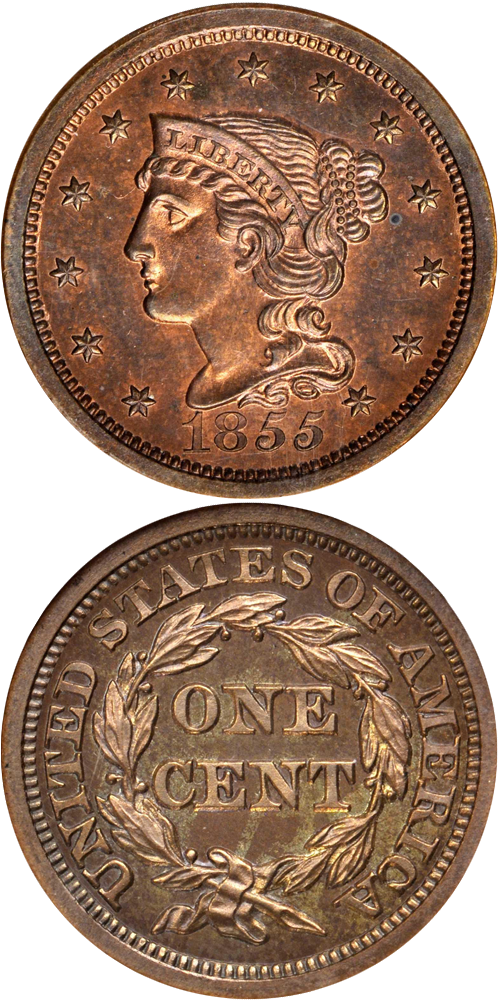1855 Braided Hair Cent
Slanted 55
This is a very interesting die pair and the sequence of the coins it struck is understood differently by different experts. Noyes places the Proof strikes at the beginning, from fresh dies. However, Grellman places them later, after the dies struck several progressively defective states impaired by heavy debris on the dies, and were then cleaned. The very fine die lines that appear on the Proofs and those struck through debris tie them all together, but these lines change very little across the strikes and it is very challenging to ascertain the exact sequence. We have elected to place the Proofs first, following the Noyes die state arrangement, with the understanding that the proper sequence may in fact be a little different.
Walter Breen discusses this particular variety only in a general sense, mentioning a few appearances and noting only a small group of fewer than 10 specimens individually. However, he does loosely mention this particular example specifically: "two were in the Lahrman sale," of which this is one. This date is one of the more plentiful where Proof strikes are concerned. The mintage of these special pieces for 1855 was accomplished by the N-10 die pair, an unusually plentiful variety in this format, and the somewhat rarer Newcomb-11. Combined, it is believed that they may have produced 100 or so Proofs, which marks a significant expansion in the manufacture of such collector pieces that corresponded with increased interest in coin collecting in America in the 1850s. However, this would not be the case with most other denominations until 1858. Though these coins are a bit more available than the dates leading up to 1855, all Proof large cents are rare and enjoy strong demand.
The example to the left was sold by Stack's Bowers Galleries in the July 2015 Baltimore Auction, where it realized $12,925.






